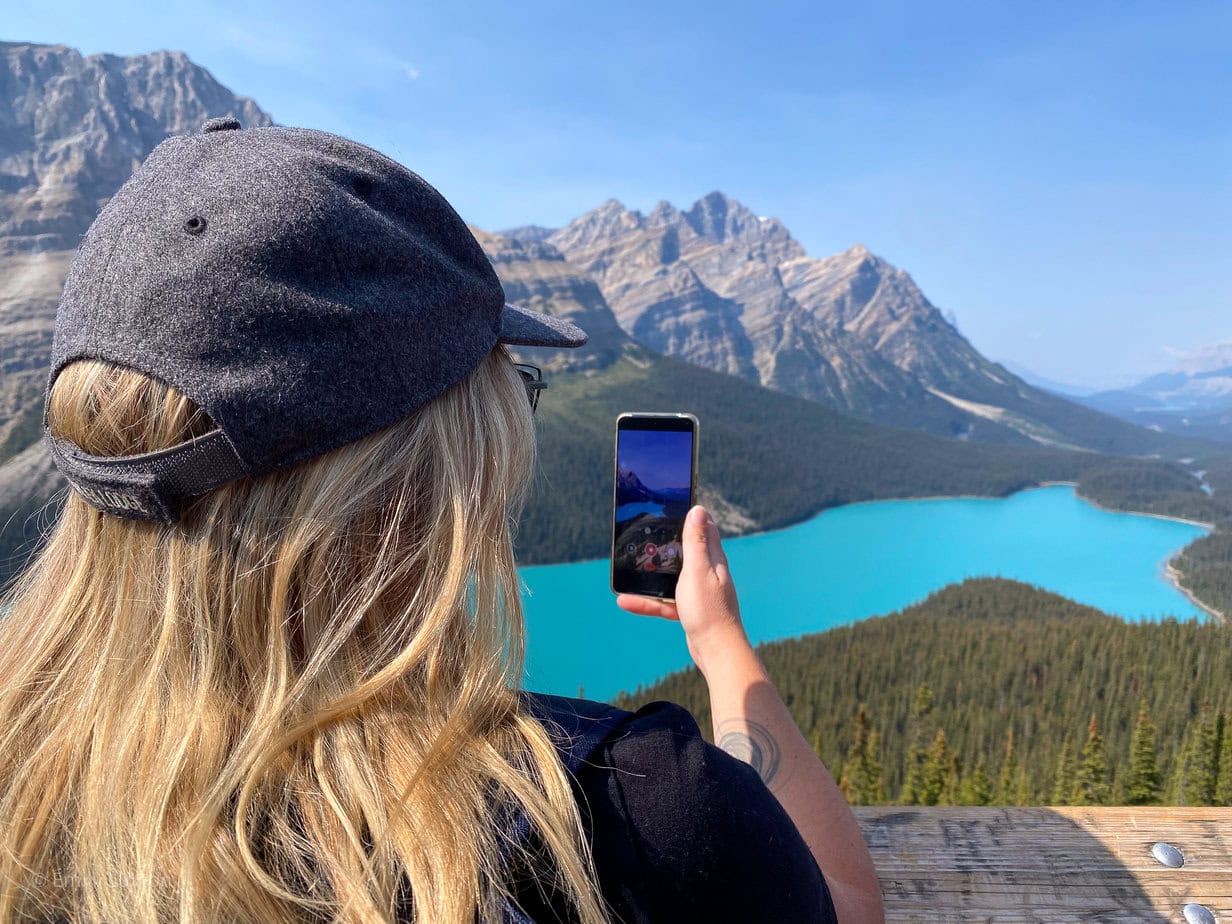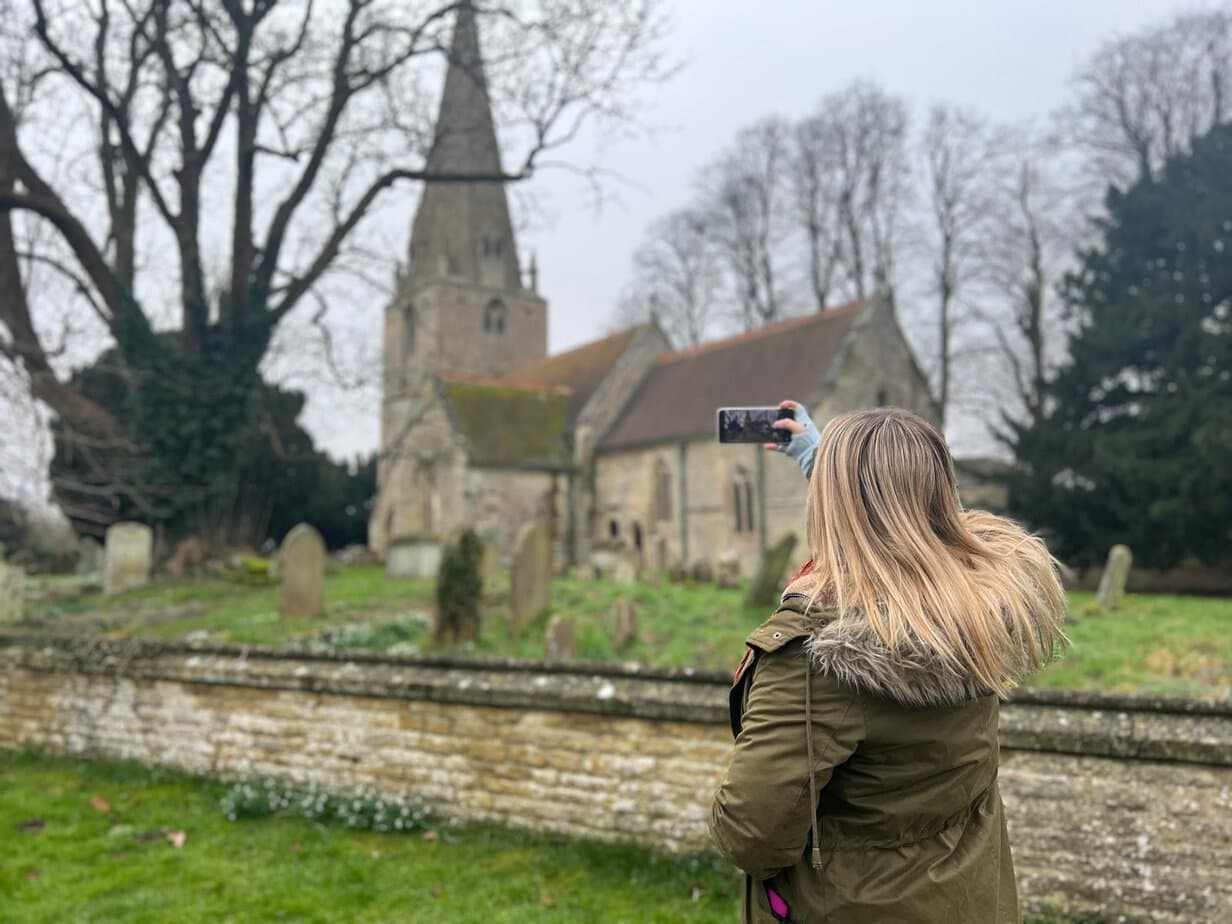Some posts on this site contain affiliate links. If you book or buy something through these links, I earn a small commission (at no extra cost to you). Take a look at my privacy policy for more information.
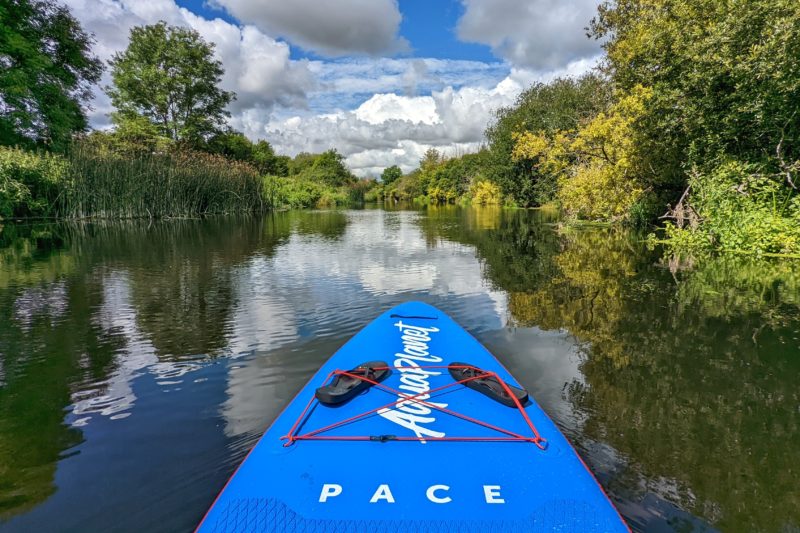
A beginner’s guide to the best paddleboarding essentials, SUP gear, and what to wear.
With summer finally here in the UK, it’s a great time to try paddleboarding. If you’ve just bought your first board and you’re wondering what else you need to get started, this is the guide for you.
I got my first board about 6 years ago, and paddleboarding quickly became one of my favourite hobbies. Over the years, I’ve picked up some great tips on exactly what you need for the perfect paddleboarding adventure. I’ve packed all that into the guide below – along with a few of my favourite product recommendations…
Must-Have Paddle Boarding Essentials
In a hurry? There’s a quick checklist at the bottom of the page – but read on for a more in-depth look at the must-have SUP gear and safety equipment.
Electric Pump
If you’ve bought an inflatable paddleboard, it probably came with a basic hand pump. But let me tell you, inflating a pump is HARD work! I highly recommend buying an electric pump instead – that way, you can save all your strength for paddling.
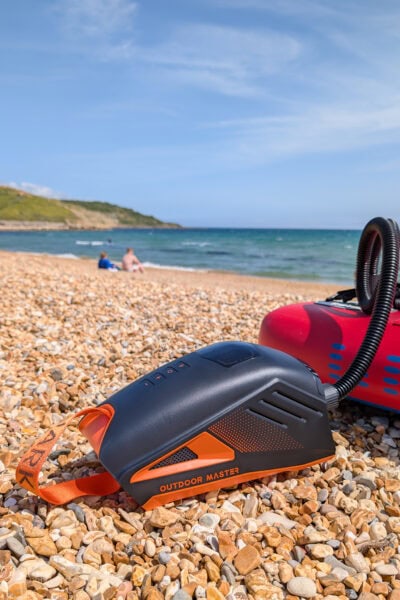
I use the OutdoorMaster SHARK 3 Rechargeable Electric Sup Pump. It’s battery-operated, so you charge it using a fast-charger USB-C plug at home, and then you can use it to inflate your paddleboard anywhere. If the battery runs out, you can switch to the 12V DC car connector to keep pumping.
It’s SO easy to use, and can pump my 10’6″ board to 16 PSI in 4 minutes – which is about 3X quicker than my previous pump (and most other models on the market). There’s an LED display where you can set the required PSI and choose one of three smart modes (SUP, Mat, or Kite) depending on what you’re pumping.
The one thing I didn’t like about the old model was how loud it was. This one is still quite loud, but much quieter than any others I’ve come across. Honestly, it’s brilliant!
READER DISCOUNT: CLICK HERE to get a 15% discount when you buy the OutdoorMaster SHARK 3!
Disclaimer: I was sent the SHARK 3 for free to test out. But I already owned the Shark 2, which I paid for myself several years ago, and was already a huge fan of the brand!
Paddle
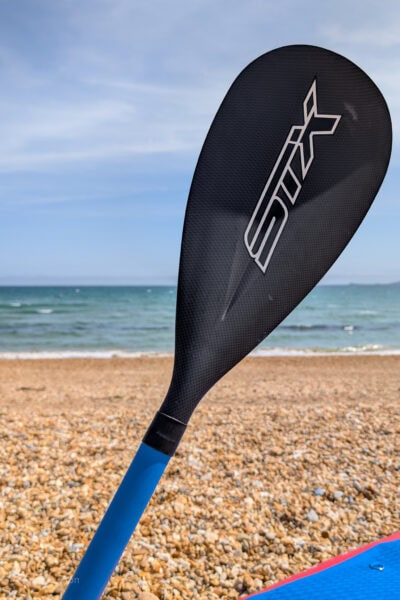
Most inflatable paddleboard kits include a paddle, but they aren’t always the best. If you’re new to paddleboarding and want to keep your budget as low as possible, an alloy paddle is usually the most reasonably priced option. Alloy paddles are decent enough, but you may want to upgrade eventually.
There are better paddles out there if you don’t mind splashing some extra cash. Paddles made using carbon fibre and/or fibreglass are more lightweight (so you can paddle longer and harder) and are very hardwearing. I’ve been using the STX Composite Carbon 40 paddle for a few years and I’m very happy with it.
Leash
A SUP leash is essential for the safety of both you and your board, as you’ll remain attached to the board if you fall off. Most boards come with an ankle strap, but a quick-release waist leash is usually much safer. The RNLI recommends choosing your leash to suit the environment:
- Moving or flowing water: Quick release waist belt leash.
- Water with no movement (eg lakes): Calf or ankle leash*.
- Whitewater: no leash. This environment would not be suitable for beginners.
*As long as there is a low risk of the leash getting caught on something.
Dry Bag
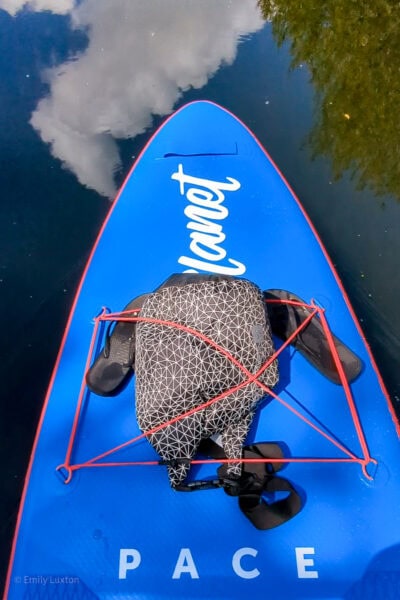
A dry bag is an absolute must-have when you’re paddling. You can use one to bring all your essentials with you on your board, whilst keeping them safe and dry. I usually pop in my phone, car keys, water bottle, and a towel – plus any snacks I’m taking with me!
You can use the clips or straps to attach the bag to your board, so even if you fall in or capsize, the bag will stay put.
RECOMMENDED PRODUCT: Blackace Arteesol Waterproof Dry Bag
Waterproof Phone Case
For safety reasons, you should always take your phone with you when paddleboarding. Plus, it’s nice to be able to take photos while you’re out on the water. Bring a waterproof phone case with a lanyard (or a clip to attach it to your bag/board) so you don’t have to worry about water damage, splashes, or dropping it overboard!
RECOMMENDED PRODUCT: JOTO Waterproof phone case
Paddle Board Repair Kit
Inflatable boards usually come with a small repair kit. Keep it with you in your dry bag in case you run into any issues while you’re out on the water.
RECOMMENDED PRODUCT: SEA DOG Water Sports Kit
Towel
You’ll want a towel to dry off after boarding. If I’m heading out for a long paddle, I usually pop a microfibre towel in my dry bag on the board so that I can dry off after a swim, or dry my hands to use my phone.
Dry Robe / Change Robe
A change robe can make changing easier when you’re done boarding. I have a waterproof dry robe from Passenger – it’s so warm and cosy when I come in off the water feeling a bit chilly! In fact, I’ll often chuck the dry robe on over my swimwear and drive straight home for a hot shower, rather than changing on the beach first!
More Safety Equipment
Life jacket or Personal Floatation Device (PFD) – You’re likely to fall in a lot while you’re learning to paddleboard. The Royal National Lifeboat Institution (RNLI) recommends using a buoyancy aid to provide extra flotation when you do, which will give you time to recover – and keep you afloat in an emergency situation.
RECOMMENDED PRODUCT: Helly Hansen Unisex Sport II Buoyancy Aid
Emergency Whistle – It might seem like overkill, but an emergency whistle is a cheap (and tiny!) addition to your paddleboarding kit that could save your life!
Top Tip: Keep your phone with you at all times, in a dry bag or waterproof pouch (see above). If you run into trouble, you can call the coastguard on 999.
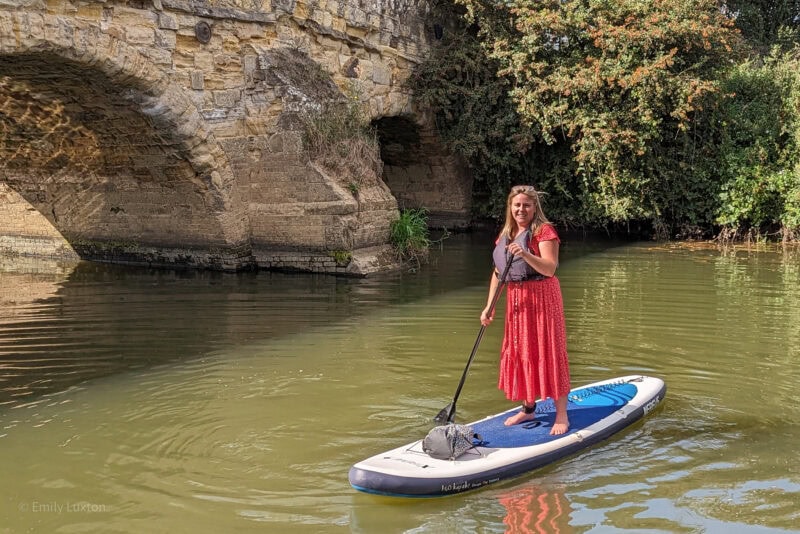
What to Wear for Stand Up Paddle Boarding
What you’ll wear for paddleboarding depends a lot on the time of year, the weather, and the environment you’ll be paddling in (eg at sea or on a lake or river).
For warm weather
Choose clothing that dries quickly and can help protect you from the sun.
- Board shorts or swimsuit: for boarding at sea in summer, standard swimwear is usually fine.
- UV rashguard (aka rash vest): wear one over your swimsuit to protect from both the sun and those chilly sea breezes. I have this long-sleeved zip-up rash vest and I’m very happy with it.
- OR: a loose, long-sleeved shirt or a light kaftan, to keep you covered from the sun.
- Water shoes or flip-flops
- Sun hat: You might want to attach a chin cord if you’re worried about losing it!
- Sunglasses: I tend to wear an old pair I don’t mind losing, in case I fall in – or you could use a sunglasses strap.
On calm water: On rivers and lakes with calm water, you’re less likely to fall in. Normal summer clothes or activewear should be fine: I tend to simply wear a dress when I’m boarding on a river!
For cooler weather (under 15°C)
If you’re a beginner, I don’t recommend heading out if it’s too cold, especially at sea. If you fall in or run into difficulty, lower sea temperatures can cause more problems.
That said, conditions in spring and autumn can still be mild enough for a paddleboarding adventure. You might want to consider a wetsuit, depending on the water temperatures, or you can stick to active wear. Layers are good, as you can take things on and off as needed!
- Wetsuit: If the water temperature is lower and you think you’re likely to fall in, a wetsuit might be the best option.
- OR – Warm active wear: If temperatures are mild enough and you don’t think you’re likely to fall in, you can wear activewear such as leggings, a long-sleeved sports top, and a light jacket.
- Gloves: Neoprene thermal gloves (made from wetsuit material) or kayaking gloves are the best.
- Wool hat or beanie: Or these Buff® headbands are great!
- Neoprene boots: Avoid paddleboarding barefoot in low temperatures.
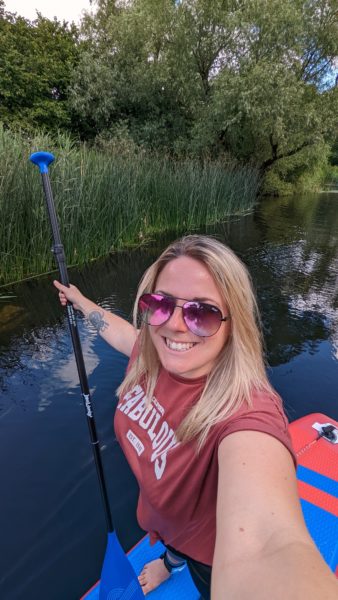
Safety Tips & Best Practices
Wear a PFD: If you fall in, or run into any difficulties, a personal flotation device could mean the difference between life and death. Even if you’re a strong swimmer, rip currents and flowing water can cause issues. So, you should always wear a PFD for paddleboarding!
Don’t paddle without a leash: See the section on leashes above for more info.
Check conditions before heading out: Remember to check the weather and tides before heading out. The weather should be a factor in what you’ll wear and pack for your paddleboarding trip. You should also check the wind speed: a safe speed is below 12 knots, and total beginners should stick to wind speeds of around 5 knots.
Be aware of currents: Some areas have rip currents and other issues that could cause difficulties, even for experienced paddleboarders. Beginners should stick to beaches that are manned by RNLI lifeguards.
Paddle Boarding Checklist
- Paddleboard
- Pump for inflatable boards – CLICK HERE for 15% off an OutdoorMaster SHARK 3 electric pump!
- Paddle
- Leash (a quick-release belt is likely the best option)
- Life jacket of Personal Flotation Device (PFD)
- Emergency whistle
- Dry Bag
- Your phone (vital in case of emergency)
- Waterproof phone case
- Towel
- Dry robe or change robe
- Water shoes or flip flops (or neoprene boots in colder weather)
- Sunglasses
- Swimwear + Rash vest or kaftan/coverup (warmer weather)
- Sunhat (warmer weather)
- Wetsuit or warm active wear (cooler weather)
- Paddling gloves (cooler weather)
- Wool hat (cooler weather)
Are there any other paddleboarding essentials you’d add to my SUP Gear Guide? Scroll down to leave a comment with your tips!


